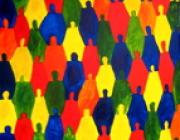Biblio
Export 4 results:
Author Keyword [ Title ] Type Year
] Type Year Filters: Author is Kim, Hyobin [Clear All Filters]
, “Effects of Antimodularity and Multiscale Influence in Random Boolean Networks”, Complexity, vol. 2019, p. 14, 2019.
, “A Multilayer Structure Facilitates the Production of Antifragile Systems in Boolean Network Models”, Complexity, vol. 2019, p. 11, 2019.
, “A Novel Antifragility Measure Based on Satisfaction and Its Application to Random and Biological Boolean Networks”, Complexity, vol. 2019, p. 10, 2019.
, “On two information-theoretic measures of random fuzzy networks”, Artificial Life Conference Proceedings, vol. 32. pp. 623–625, 2020.
